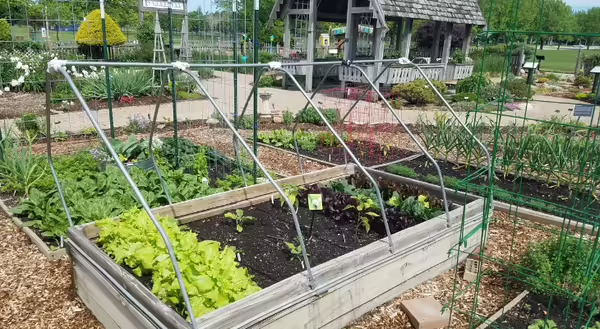
The spring-like weather this past week has been phenomenal. Although we may see a return to cooler weather since March is known to “come in like a lion”, it was certainly a sign of things to come. I’m really looking forward to March’s exit as it “goes out like a lamb” and the 2022 gardening season takes shape.
Planting time is coming up
Warmer days are a reminder that daylight hours are increasing with each passing rotation of the earth and the vegetable gardening season will be upon us before we know it. If you plan to start seeds indoors for many of the warm season vegetables, like tomatoes and peppers, its time to start getting organized.
For the more cold-hardy cool season vegetables, such as kale, leaf lettuce, cabbage and spinach, the time to seed outdoors is approaching quickly. I have typically started these plants from seed in mid-March. This year, I’m planning an upgrade to our vegetable gardening area that may help me start crops even sooner with many benefits that raised beds provide.
Updating an existing garden
Our current vegetable garden was installed over 20 years ago and nearby trees are now starting to shade the southern portion of our garden in the early morning and late afternoon. So, we have decided to shift our garden north and transition to raised beds. Although labor intensive this year, the new raised beds will reduce the need for annual soil preparation and help us move toward a more no-till vegetable gardening system aimed at maximizing the quality of our garden soil.
Some of our new garden beds will fall on top of old garden space, some will need to be started from scratch. Soil under the footprint of each new bed will be dug up and loosened to a depth or 10-12 inches and compost will be added during this process to increase soil organic matter.
Constructing raised beds
We plant to construct 6-8 inch tall wood sides for each bed and fill them up with garden soil from the Urbana Landscape Recycling center. The resulting new beds will have up to 20 inches of loosened, uncompacted soil with a high organic matter content.
The short sides on our raised beds will be made of untreated cedar boards. It is important to be sure any materials used in construction of raised beds is safe for use around food production areas if you plan to plant vegetables. We choose untreated lumber to avoid any potential soil contamination from chemicals that may leach from treated boards. Cedar has natural, rot-resistant characteristics making it a great choice.
Over the years I have seen quite a few materials used to construct raised beds. Often, there are cheap or recycled materials that work great. From old bricks to larger diameter tree limbs or whole trunks, there is typically a practical option for bed construction using materials that are readily available.
Benefits of raised beds
Although the new beds aren’t incredibly tall, the simple act of raising the soil even 6 inches will result in quite a few benefits. Upper soil layers will dry out and warm up sooner each spring, allowing for earlier planting. The combination of improved soil drainage and better aeration helps reduce disease issues associated with lingering surface water and poor air drainage.
An increase of just 6 inches in height improves light infiltration into the plant canopy, which also evaporates moisture on leaves more quickly to discourage proliferation of fungal diseases. In addition, bringing “ground level” of the beds up can alleviate the strain on your body when planting, weeding and harvesting.
Perhaps the greatest benefit of a raised bed system lies in the reduction of soil compaction from foot traffic. In-ground gardens planted in rows result in foot traffic up and down each row throughout the growing season that drastically compacts soil. Our new beds are designed with a width of 4 feet or less allowing all areas of the bed to be reached without actually stepping inside its borders, virtually eliminating soil compaction. Without the need for conventional rows, plants can be installed in beds with uniform spacing, which has been shown to increase yields per area of garden.
Raised beds are extremely versatile and can be constructed in all shapes and sizes, making even the smallest area a productive vegetable garden. If you are interested in seeing raised beds in action,
Check out raised beds in action
Master Gardeners have a variety of examples installed at community gardens across central Illinois. These spaces are open to the public and designed to inspire others to adapt new gardening techniques. You can check out raised bed gardening in the vegetable gardens at Iroquois Memorial Hospital in Watseka, the Douglas Discovery Garden in Danville, the Kennekuk Herb Garden at Kennekuk County Park in Vermilion County or the Idea Garden in the University of Illinois Arboretum. More information is available at extension.illinois.edu/cfiv/horticulture.
More information about raised beds and vegetable gardening
For more information on gardening with raised beds, here is a Raised Bed Checklist.
Illinois Extension also has an excellent website with much more information about vegetable gardening available here: https://web.extension.illinois.edu/vegguide/.
Illinois Extension offers a wonderful guide to growing common vegetables and herbs in Illinois, titled “Vegetable Gardening in the Midwest”. This manual may be purchased at the University of Illinois Extension Office at 801 N. Country Fair Drive in Champaign or online at: go.illinois.edu/VegetableGardening.